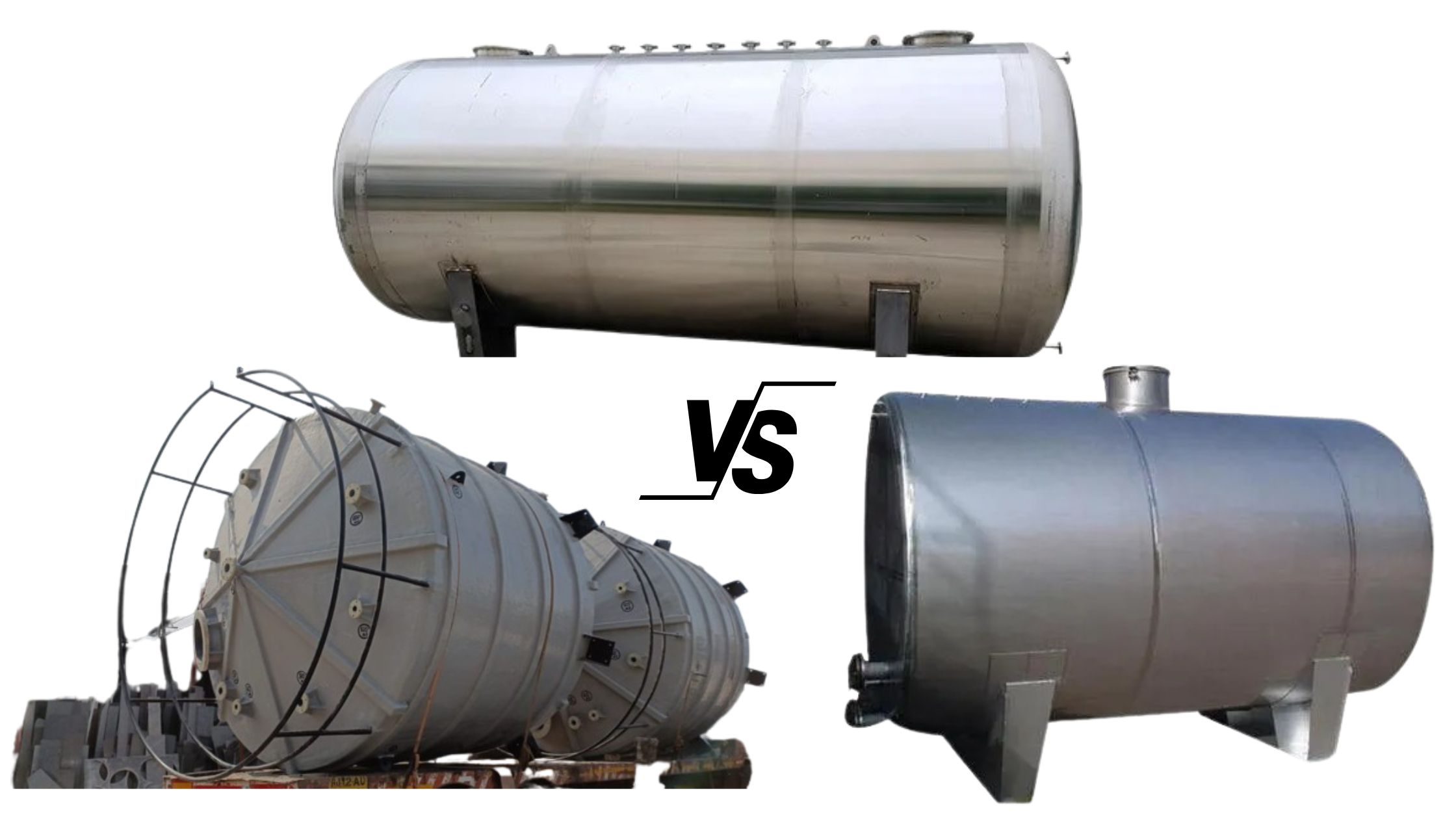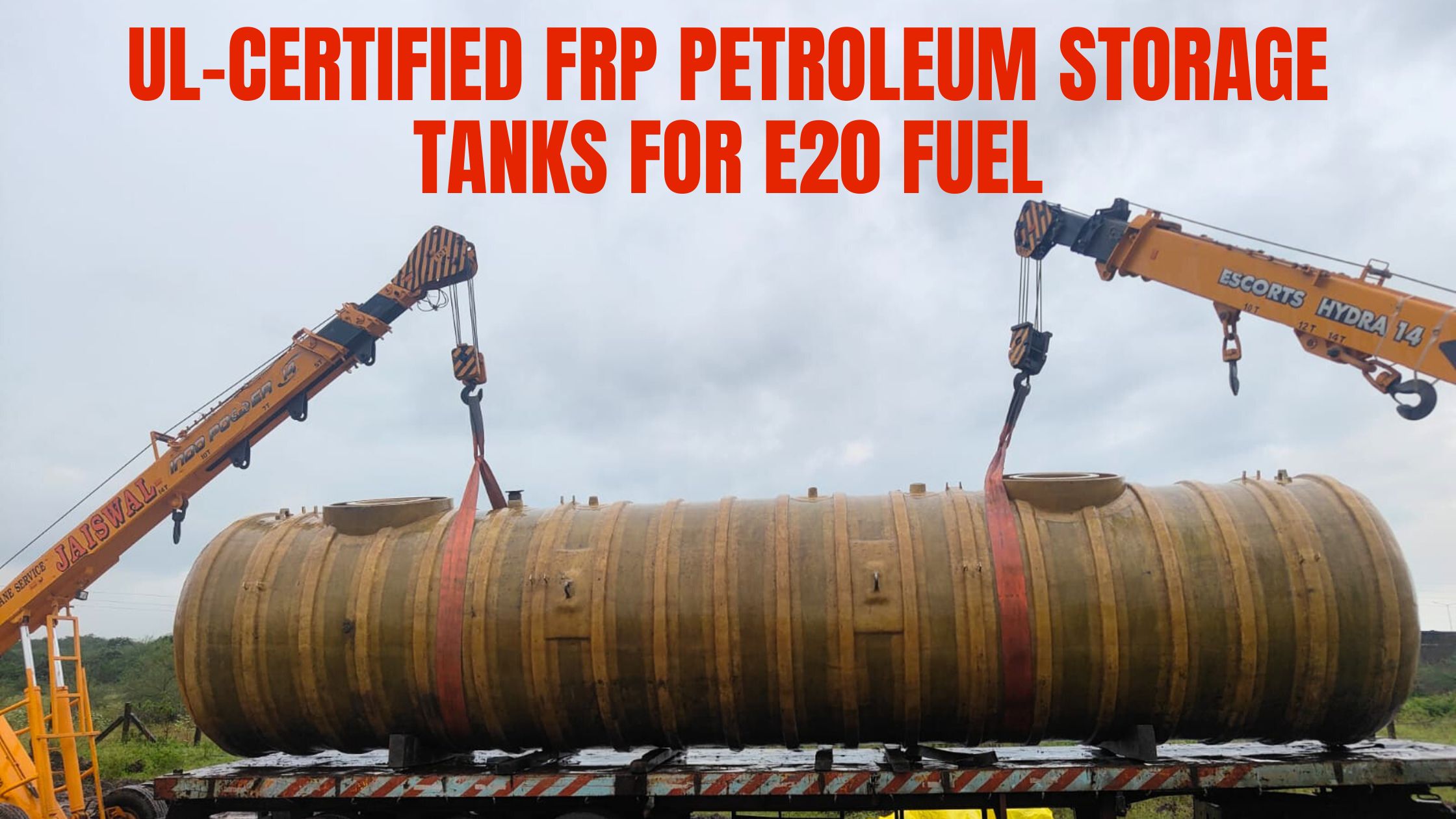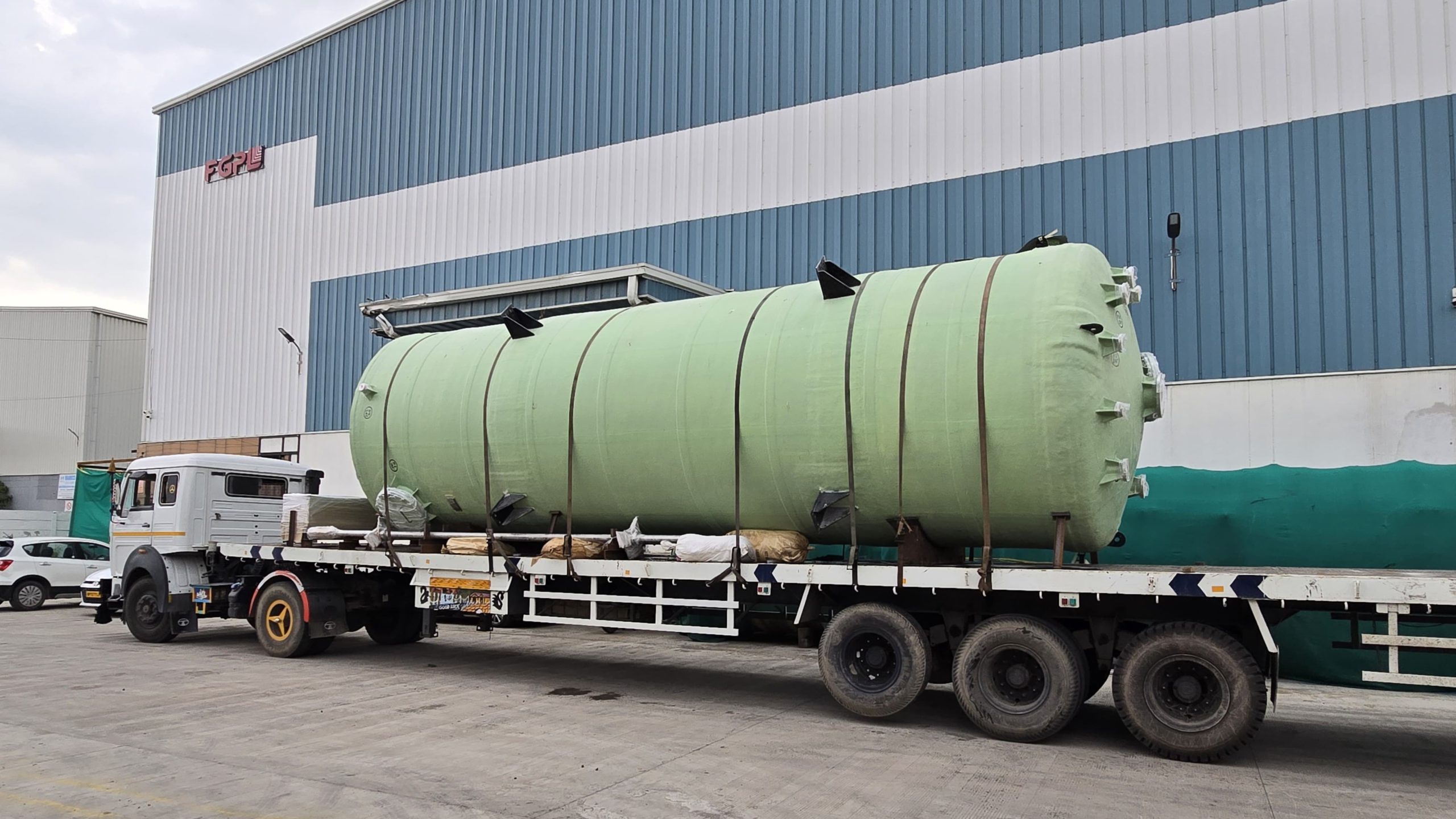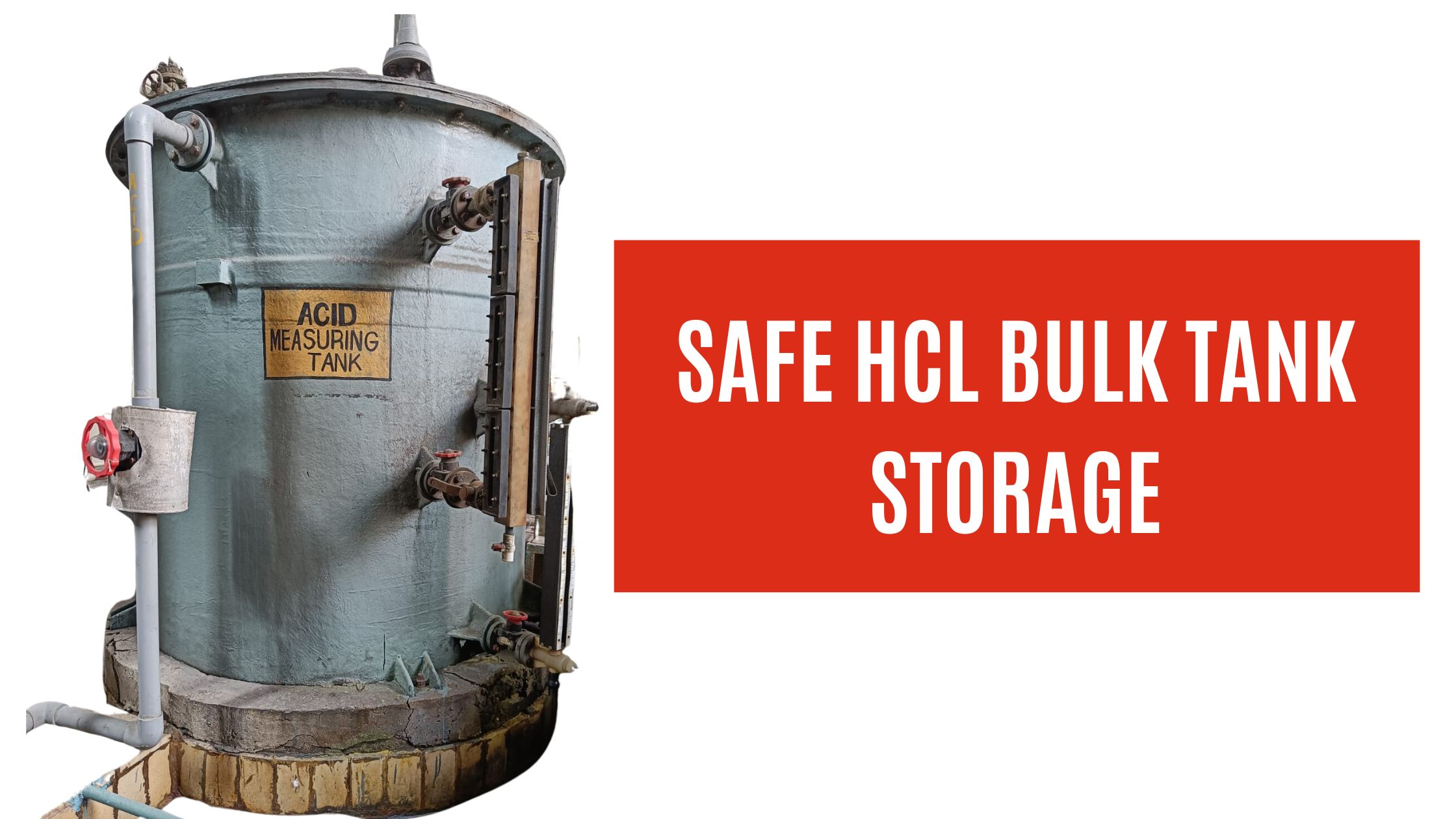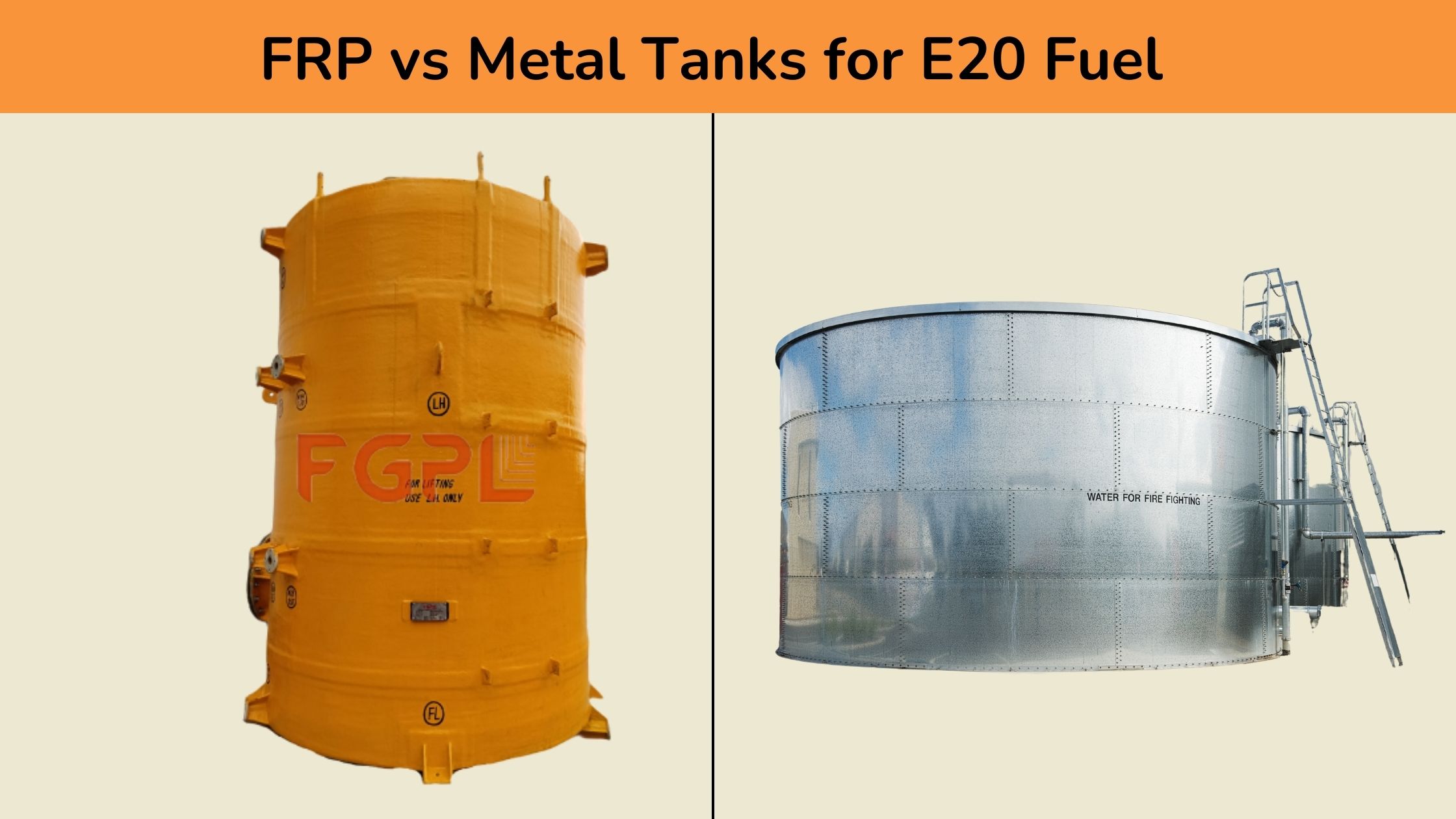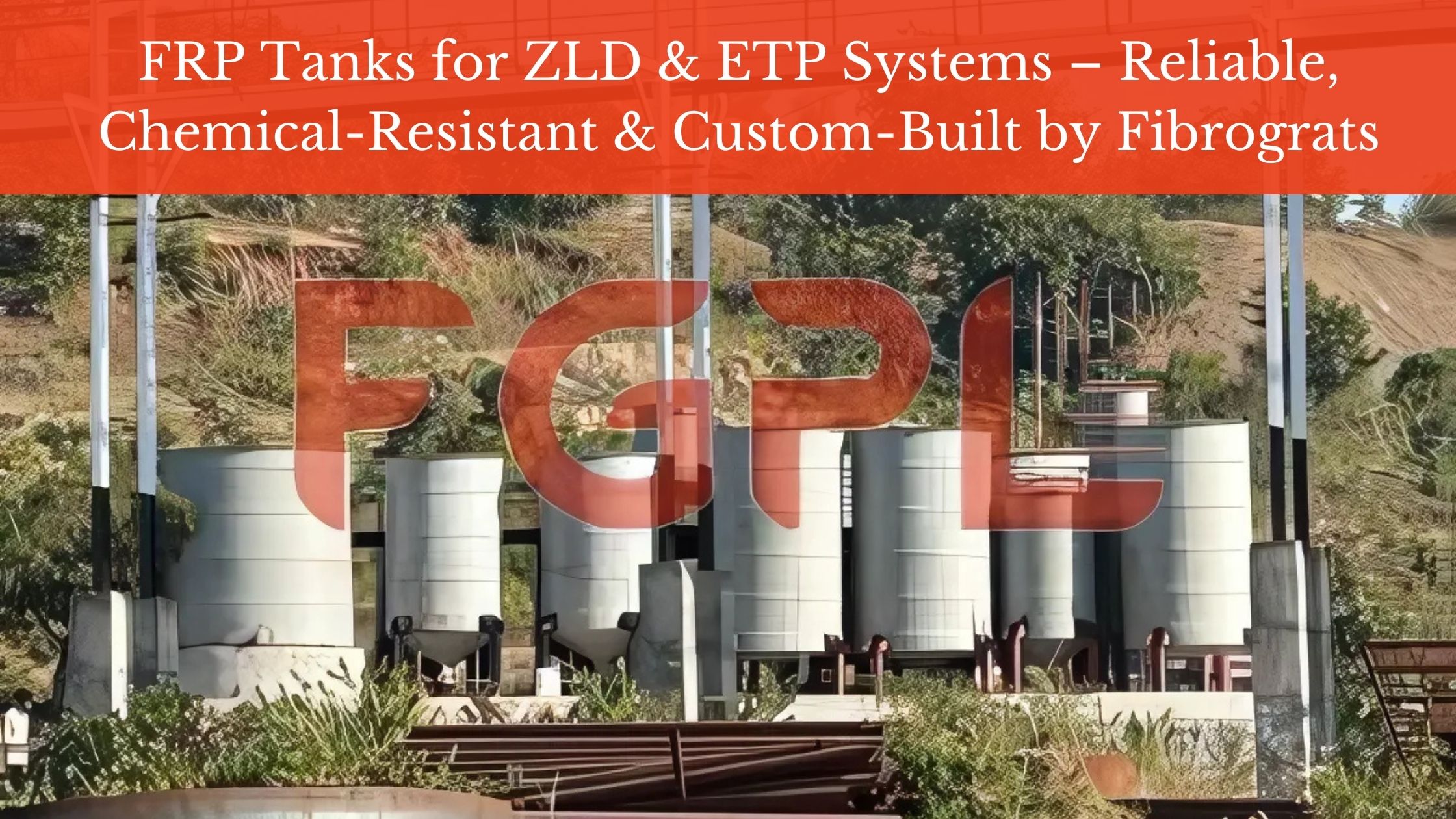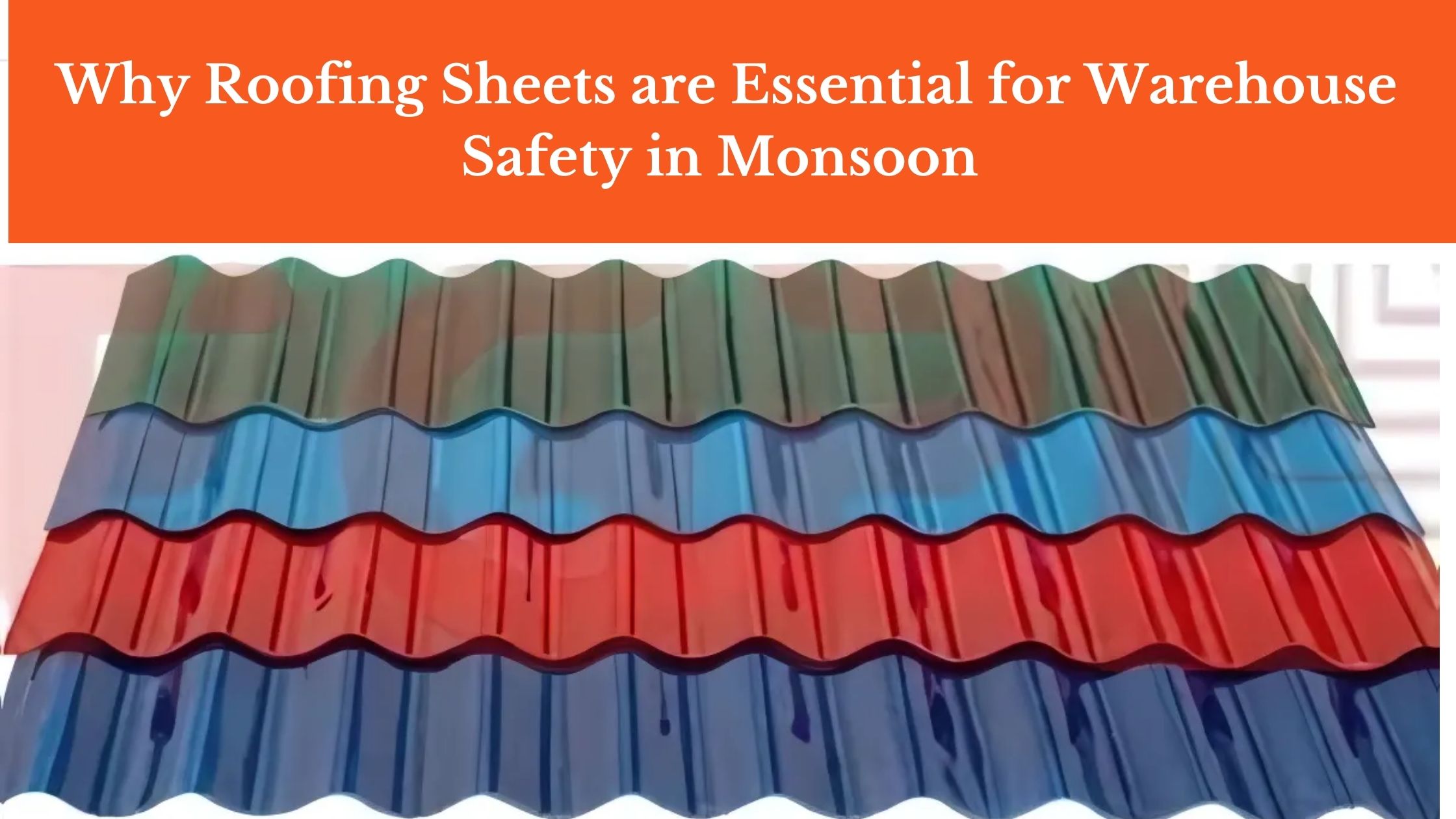When it comes to industrial storage solutions, choosing the right material for tanks is crucial. Each type of tank, whether made from Mild Steel (MS), Stainless Steel (SS), or Fiber Reinforced Plastic (FRP), has its unique properties, advantages, and limitations. This comprehensive analysis will provide an in-depth comparison of these materials to help you decide based on your specific requirements.
MS vs. SS vs. FRP Tanks Comparison
Material Composition and Properties:
Mild Steel (MS)
Composition: Mild Steel is low-carbon steel, typically containing 0.05% to 0.25% carbon by weight.
Properties:
- High tensile strength.
- Ductile and malleable.
- Prone to corrosion and rusting if not properly coated.
Stainless Steel (SS)
Composition: Stainless Steel contains chromium (at least 10.5%) and other elements such as nickel, molybdenum, and manganese.
Properties:
- Highly resistant to corrosion and rust.
- Strong and durable.
- Maintains integrity at high temperatures.
- Requires less maintenance.
Fiber Reinforced Plastic (FRP)
Composition: FRP is made from a polymer matrix (like polyester, vinyl ester, or epoxy) reinforced with fibers (typically glass fibers).
Properties:
- Excellent corrosion resistance.
- Lightweight yet strong.
- Non-conductive.
- Can be molded into complex shapes.
- UV resistant with appropriate additives.
Corrosion Resistance
Mild Steel (MS)
Corrosion Resistance: Poor. MS requires protective coatings (like galvanizing, painting, or epoxy) to prevent rust and corrosion, especially in aggressive environments.
Stainless Steel (SS)
Corrosion Resistance: Excellent. SS is inherently resistant to rust and corrosion due to the presence of chromium, which forms a passive layer of chromium oxide.
Fiber Reinforced Plastic (FRP)
Corrosion Resistance: Outstanding. FRP is highly resistant to corrosion from chemicals, water, and other environmental factors, making it ideal for aggressive and corrosive environments.
Strength and Durability
Mild Steel (MS)
Strength: High tensile strength but lower in comparison to stainless steel.
Durability: Good, but susceptible to corrosion and requires regular maintenance to ensure longevity.
Stainless Steel (SS)
Strength: Very high tensile strength.
Durability: Excellent. SS tanks can last for decades with minimal maintenance due to their resistance to corrosion and high strength.
Fiber Reinforced Plastic (FRP)
Strength: High strength-to-weight ratio. While not as strong as SS in tensile strength, it is strong enough for most industrial applications.
Durability: Very durable in corrosive environments. However, mechanical damage can impact its structural integrity.
Weight
Mild Steel (MS)
Weight: (Heavy). MS tanks are significantly heavier than FRP tanks, making transportation and installation more challenging.
Stainless Steel (SS)
Weight: (Heavy). Similar to MS, SS tanks are also heavy but slightly lighter than MS tanks due to their higher strength-to-weight ratio.
Fiber Reinforced Plastic (FRP)
Weight: (Lightweight). FRP tanks are much lighter than both MS and SS tanks, which reduces transportation and installation costs.
Thermal Conductivity
Mild Steel (MS)
Thermal Conductivity (High). MS tanks can conduct and transfer heat quickly, which might not be desirable in all applications.
Stainless Steel (SS)
Thermal Conductivity: Lower than MS but still conducts heat relatively well.
Fiber Reinforced Plastic (FRP)
Thermal Conductivity: (Very low). FRP is an excellent insulator, making it suitable for applications where thermal insulation is required.
Cost
Mild Steel (MS)
Cost: Generally the least expensive option. However, the cost of maintenance and protective coatings should be considered.
Stainless Steel (SS)
Cost: More expensive than MS. The high initial cost is often offset by lower maintenance costs and longer lifespan.
Fiber Reinforced Plastic (FRP)
Cost: Comparable to or slightly higher than SS, depending on the application and specific resin used. The cost is justified by its excellent corrosion resistance and low maintenance requirements.
Applications
Mild Steel (MS)
Applications: Used in applications where cost is a primary concern and the environment is not highly corrosive, such as water storage, oil and gas, and certain industrial processes.
Stainless Steel (SS)
Applications: Ideal for food and beverage processing, pharmaceutical manufacturing, and applications involving corrosive substances or high temperatures.
Fiber Reinforced Plastic (FRP)
Applications: Perfect for chemical storage, wastewater treatment, marine environments, and any application requiring resistance to corrosive substances and harsh environmental conditions.
Maintenance and Lifespan
Mild Steel (MS)
Maintenance: Low maintenance requirements due to inherent corrosion resistance.
Lifespan: Very long lifespan, often several decades with proper care.
Stainless Steel (SS)
Maintenance: Low maintenance requirements due to inherent corrosion resistance.
Lifespan: Very long lifespan, often several decades with proper care.
Fiber Reinforced Plastic (FRP)
Maintenance: Minimal maintenance is needed. Periodic inspections for mechanical damage are recommended.
Lifespan: Long lifespan, especially in corrosive environments
Environmental Impact
Mild Steel (MS)
Environmental Impact: Steel production has a significant environmental footprint due to the energy-intensive processes involved.
Stainless Steel (SS)
Environmental Impact: Also has a considerable environmental impact, but SS is 100% recyclable, which can mitigate its overall footprint.
Fiber Reinforced Plastic (FRP)
Environmental Impact: The production of FRP involves chemicals and resins that can be harmful if not managed properly. However, FRP’s long lifespan and minimal maintenance can offset some of its environmental impact.
Conclusion
Choosing the right material for your industrial storage tank depends on several factors including the nature of the stored substances, environmental conditions, budget, and maintenance capabilities. Here’s a quick summary:
- Mild Steel (MS): Cost-effective but requires regular maintenance due to corrosion susceptibility.
- Stainless Steel (SS): High initial cost but offers excellent durability, low maintenance, and corrosion resistance, making it suitable for a wide range of applications.
- Fiber Reinforced Plastic (FRP): Provides outstanding corrosion resistance, is lightweight, and has low maintenance. Ideal for highly corrosive environments but can be costlier upfront.
By understanding the strengths and weaknesses of each material, you can make an informed decision that best meets the needs of your specific application.
Follow us on Facebook: @fibrograts

